

Tao Te Ching
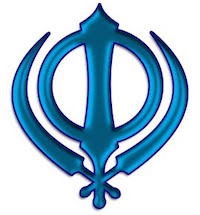
Sikh (ਸਿੱਖ) Lineage
One of the world’s youngest religions, Sikhism emphasizes meditation, teaches the unity of all humankind, practices selfless service, working for social justice, prosperity for everyone, and honest livelihood living as a householder. Rejecting any religion or philosophy’s claim on absolute truth, it weaves a path between Hinduism and Islam clearly in our non-thought lineage of non-duality beyond concepts of self and other. It empowers the individual over priest, ritual, and dogma encouraging the direct, sacred experience of everyday life and broadens this personal view to include a political-social-spiritual system based on goodness, virtue, and equality.
People (13)
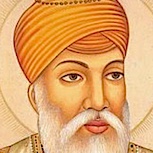
Kabīr कबीर
1399 – 1448 CE
Formidable iconoclast and deeply spiritual but anti-religious leader, a simple weaver but greatest poet of his time and place; Kabīr was born and raised as a Muslim, studied with a Hindu guru, became critical of both traditions, was physically threatened by both and after he died revered and claimed by both. From his background of a Muslim father and Hindu mother, he worked tirelessly to unite both traditions with a wisdom beyond their sectarian views. An important influence on Guru Nanak and the founding of Sikhism, his poetry and wisdom continue today in mainstream Indian film, folk songs, and even progressive rock.
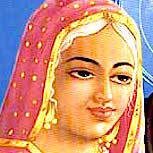
Nanaki (Bibi Nanaki ji)
1464 – 1518 CE
Elder sister, surrogate mother, and first disciple of the first Sikh guru, Nanak; Nanaki was instrumental in giving birth to the Sikh tradition. With a sister’s deep affection and a mother’s tender nurturing, she recognized Guru Nanak’s wisdom and potential when he was very young, encouraged his spiritual development, and became the first Sikh. She supported him when their father tried to force him into a conventional lifestyle as well as his rebellion against Hindu customs and rituals. She arranged his marriage, helped take care of his sons, and became a symbol and inspiration for the closeness of family and sister-brother relationship.
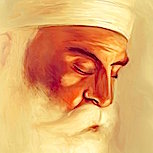
Guru Nanak Gurmukhi ਗੁਰੂ ਨਾਨਕ
1469 – 1539 CE
“One of the greatest religious innovators of all time” and founder of Sikhism – one of the world’s newest religions; Guru Nanak traveled widely learning and teaching in the non-thought lineage of non-duality beyond concepts of self and other. He spread a message of replacing revenge and anger with peace and kindness; of each person’s direct access to the highest realizations without need of priest or ritual; of the inseparability of spiritual and everyday life in the world. He set up a political-social-spiritual system based on goodness, virtue, and equality: a much-needed message for our modern world.
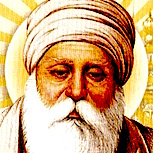
Guru Amar Das ਗੁਰੂ ਅਮਰ ਦਾਸ
1479 – 1574 CE
Born into a farming family and a shopkeeper by trade, Amar Das didn’t become the Sikh guru until he was 73 years old but still had a profound influence. He convinced the Muslim emperor Akbar to decrease the persecution of Sikhs and Hindus and to decrease taxes. Against guru wealth and luxury, strongly against the caste system and corruption of all kinds, he spoke against the practices of sati and purdah, wouldn’t let recluses and ascetics become Sikh or Sikhs visit Muslim holy places, and required that anyone who wanted to see him must first eat from the common kitchen.
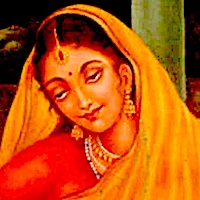
Meera (Mirabai, Meera Bai )
1498 – 1546 CE
Inspiring poet, cultural freedom inspiration
Royal family princess, mystical poet, Bhakti movement saint; Meera’s deep devotion expressed in public dancing and singing aroused strong opposition, rejection, and assassination attempts from the Royal Family. Dedicated to a formless divinity, she wrote countless devotional poems called bhajans that became and remain popular on temples across India. Her devotion and courage inspired folk tales, legends, poets, and now popular literature, comic strips, and movies. Her life became a symbol for the common people’s suffering and inspirations for creating a better world as well as for women struggling in an environment trying to force them into role-based boxes. Also one of 16 Sikh bhakti saints, she became a symbol of freedom and following a personal path of inspiration rather than bowing to social, family, and political pressures of conformity.
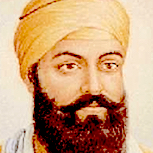
Guru Angad ਗੁਰੂ ਅੰਗਦ ਦੇਵ
1504 – 1552 CE
The son of a merchant, refugee from Babar’s invasion, and chosen as successor by Guru Nanak over his own sons; Angad developed Gurmukhi script, the main way of writing the Punjabi language. This helped give Sikhs a strong identity and ability to study ancient wisdom in their own language without need of translation and separate from the Sanskrit religious traditions and solidify Sikhism as a separate religion. He was also a strong influence in undermining the caste system and furthering the Sikh vision of equality.
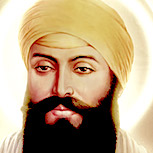
Guru Ram Das ਗੁਰੂ ਰਾਮ ਦਾਸ
1534 – 1581 CE
Leading a revolt against superstition, Guru Ram Das emphasized egocentrism as our main problem and - along with quiet meditation - actively helping others as the main remedy. He described the reason for his long beard as a way of dusting off the feet of others. He built the Sikhs’ holiest center, Amritsar, wrote a hymn still used in standard Sikh weddings, and emphasized the importance of deeds over caste, compassion over materialism. He exposed the hypocrisy of prejudice, misogyny, and cultural chauvinism disguised as religion and exemplified the way of direct realization beyond concept and form.
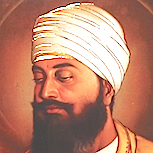
Guru Arjan ਗੁਰੂ ਅਰਜੁਨ ਦੇਵ
1563 – 1606 CE
Great musician and singer, youngest son of Guru Ram Das; Guru Arjan laid the foundation for the famous Golden Temple but instead of going along with the prevalent view that it should be the highest building in the area, emphasized humility and built it on the lowest elevation possible. And to counter the Muslim tradition of the entrance on the west and the Hindu version of it being in the east, he made entrances on all four side. Compiling the first edition of the Sikh “Bible,” Holy Guru Granth Sahib and avoiding sectarianism he included teachings of Hindu and Muslim saints. Jailed and tortured by a corrupt Muslim emperor, Arjan refused to convert or change his teachings and died changing the direction of Sikhism.
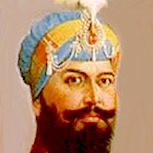
Guru Hargobind ਗੁਰੂ ਹਰਿ ਗੋਬਿੰਦ (Saccha Badshah ("True Emperor"))
1595 – 1644 CE
Founder of Kiratpur, builder of the Akal Takht, liberator of Hargobindpur, sixth and longest reigning Sikh guru, Guru Hargobind introduced weapons and martial arts into the Sikh tradition and in an effort to defend freedom of religion and defend against Islamic persecution, became the first Sikh Guru to engage in warfare. Persecuted, imprisoned and poisoned; he overcame obstacles, defeated superior Moghul forces, and united the practical and the spiritual, defense and compassion helping to establish the independence of Sikhs as their own political and religious force.
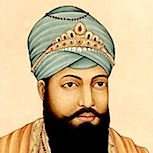
Guru Tegh Bahadur ਗੁਰੂ ਤੇਗ਼ ਬਹਾਦੁਰ
1621 – 1675 CE
Publicly beheaded by the Mughal Emperor after being tortured for many weeks because of refusing to convert to Islam, Tegh Bahadur’s father predicted when he was born, “He shall protect the weak and relieve their distress.” He sacrificed himself to protect the Hindus and Sikhs of Kashmir who were being persecuted and forced to convert to Islam and this event further condensed the Sikh community’s resolve to resist Muslim rule. He became a symbol for religious freedom and the protection of human rights while turning the tide of history for Sikhs, India and the Panjab setting the stage for a government based on social justice without prejudice based on color, caste, or religion.
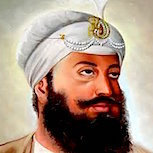
Guru Har Rai Ji ਗੁਰੂ ਹਰਿ ਰਾਇ
1630 – 1661 CE
A sensitive child disturbed when his robe accidentally hurt plants when he walked by, this seventh of the Sikh Ten Gurus remained a man of peace but continued the military tradition of his predecessor and kept over 2000 mounted soldiers at all times. He followed in the Sun Tzu tradition and won battles with strategy rather than aggression and violence. He stopped and prevented corruption, set up a medical research center, and established an Ayurvedic hospital. Herbs from these centers cured a serious and what was thought an incurable medical condition of the Mughal emperor’s son.
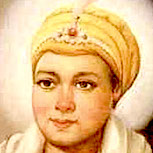
Guru Har Krishan ਗੁਰੂ ਹਰਿ ਕ੍ਰਿਸ਼ਨ (the “Child Guru”)
1656 – 1664 CE
Eighth and at 5 years old, youngest to become one of the 10 Sikh Gurus, Guru Har Krishan died when only eight years old. Chosen by his father because his older brother was in collusion with the Moghal Empire and because he had a soft heart, his youth didn’t seem to diminish his understanding, wisdom, or compassion. It was said about him, “The early morning sun looks small in size, but its light is everywhere.” During a smallpox epidemic, he helped take care of patients from different communities, religions, and castes; caught smallpox himself and died less than 2.5 years after securing his place in Sikh history.
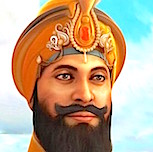
Guru Gobind Singh ਗੁਰੂ ਗੋਬਿੰਦ ਸਿੰਘ
1666 – 1708 CE
Philosopher, poet, spiritual master, warrior, and last living Sikh Guru; his father was beheaded for refusing conversion to Islam and Guru Gobind Singh became Sikh leader when 9 years old. He introduced the Five Ks – the articles of faith that Sikhs always wear, founded the Khalasa warrior community, wrote important texts, and inspired his tradition to always stand up to tyranny and injustice. A great warrior who warned against aggression justifying it only as a last resort, he was betrayed by attacking Hindus but helped by loyal Muslims. Escaping this and other traps, he helped a new prince become emperor giving the Sikhs political support and transferred the succession on to a Holy Book instead of a personal guru.
Comments (0)